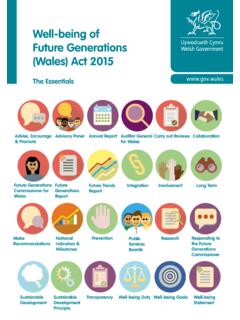Transcription of A Legacy of the Propaganda: The Tripartite View of ...
1 A Legacy of the Propaganda: The Tripartite View of Philippine History by Dr. Zeus A. Salazar The broad division of most national histories in the Third World into: precolonial, colonial, and post-colonial has its equivalent in Philippine historiography and historical consciousness. The Filipino view, however, was worked out even before the Spaniards were driven out of the country. It was, in fact, a major weapon in the ideological armory of the Filipino struggle against the Spanish colonial regime. Elaborated during the Propaganda Movement, it became the historical worldview of the Revolution which was considered to be the final struggle to bring about the period of freedom from colonial bondage.
2 Imbibed by Filipinos of today as part of the revolutionary heritage, it still dominates ordinary Filipino thinking about Philippine history and history as such. By inextricably attaching our people's history to the colonial phenomenon, it in fact still nourishes what has been called "colonial mentality" down to the very depths of the popular (and, to an extent, even professional) historical consciousness. During the Propaganda and the Revolution, however, this Tripartite view of our national history had a positive effect on the burgeoning national psyche. Its power as an id e-force came from its being a highly emotive reaction against the Spanish bipartite view of Philippine history which had supplanted an earlier Filipino historical consciousness.
3 The Indigenous and the Spanish Views We had, at the arrival of the Spaniards an indigenous sense of history, but scarce regard for the past as history. Unlike the French histoire (which derives from the Greek word for "inquiry" whose Indo-European root, wid, had given Gothic witan (German wissen, English wit) or "knowledge" and Sanskrit Veda or "knowledge par excellence, mystical knowledge"); or unlike even the German Geschichte (from geschehen "to happen," as in a story of history, which are the meanings of the substantive), our word for "history" in Tagalog does not refer to knowledge, to the search for information or to what happened in the past as such. Kasaysayan comes from saysay which means both "to relate in detail, to explain," and "value, worth, significance.
4 " In one sense, therefore, kasaysayan is "story" (like German Geschichte or another Tagalog term, salaysay, which is probably simply an extended form of saysay). But kasaysayan is also "explanation," "significance," or "relevance" (may saysay "significant, relevant;" walang saysay or walang kasaysayan, meaning "irrelevant; senseless"). What was then important to us was the story and its significance, in so far as this could be explained and made relevant to a particular group. Now, apart from the lack of reference to inquiry (the methodological aspect which, up to the end of the Spanish regime, was hardly heeded), that is exactly what history is all about, knowledge being actually meaning rendered understandable and relevant to a group of people.
5 From their kasaysayan, however, our ancestors derived a different sense of history. For our ancestors had a sense of the eternal recurrence of natural and human phenomena: day and night, the seasons, seed and plant, the cycle of life and death, the passing and coming of generations, youth and age, planting and harvesting, war and peace with neighboring barangays. There would therefore be myths and legends about these recurrent "events," for they had kasaysayan meaning and relevance to their lives, to be explained and recounted in detail to everyone. Our ethnic literatures and religions are replete with these explicative stories. Equally relevant to the community were the genealogies which made the elite families, descend from the gods, thus explaining their socio-political primacy.
6 It was a practice common to the entire archipelago, closely connected with the religious ideology of the epics which, because they contained these "vain genealogies," were sung precisely under the auspices of the datus and maharlikas just as later, in the lowlands, the pasyon would be chanted in the epic fashion under the periodic sponsorship of the principales, the converted datus and maharlikas. All this had kasaysayan, was meaningful and relevant; but the implicit historical sentiment behind every myth, legend, or ritual in the ancient worldview was "cyclical." To break away from this cyclical view of time and events, the ancient community needed some sudden jolt from the unexpected.
7 This the Spanish advent provided as it confronted the Filipinos with a sequential view of events, together with an external interpretation of their actions within a non-recurrent time frame. Of course, the Christian philosophy of the friars was also cyclical in the sense that mankind's story started with Paradise where Adam and Eve had to fall from the Heavenly Father's grace before the Son could become Man to save their descendants in this world who, with the second coming of the Lord, would recover, if they merited it, the paradisiac condition of their primeval parents. But, within that broad cosmic framework, the friars thought and reported on the Filipinos in linear terms.
8 The chronicles recorded events in terms of change and movement, not of the timeless returning of form and ceremony. Even the recurrent feasts were considered unique occurrences because they differed from year to year, from celebration to celebration. In any case, the events were taking place no longer in relation to the cyclical preoccupations of the various ethnic communities; they now had kasaysayan meaning and relevance in relation to the entire archipelago as a field for Hispanic colonial endeavor -- and, of course, to Spain as this "national" or Christian monarchic idea was understood by the religious and, occasionally, by more secular minds. A new direction was thus being imposed upon the lives and acts of Filipinos and that direction was understood and explained in the categories of a foreign historical consciousness.
9 This historical consciousness, for all its linearity, could have been acceptable to Filipinos, particularly when in the nineteenth century they had begun to understand and to feel the need for the Spanish archipelagic frame of reference. But the archipelago was even then considered simply as the stage for the action of Spain, so that the historical consciousness that viewed and integrated such action was, in the end, one which saw Philippine history as merely that of "Spain in the Philippines." It was a consciousness that could not help but consider the Indio as the object of historical action by the Spaniard who, in his own self-conscious view of himself, was the conscient subject exercising his political will ( through the colonial state) in pursuit of a religious and civilizing mission.
10 The historical vision of Spain in the Philippines was thus bipartite, with the barbarian and pagan condition of the Indios in the prehispanic past its first epoch and, as its second and continuing one, the advent of Spain and the spread of its civilizing influences in terms of polity and religion. The image that one often gets from the chronicles to illustrate this historical view is that of transition from darkness to light, from infancy to progressive maturity. Such an historical ideology was naturally satisfying to the Spaniards and to hispanized Indios who had been fully detached from their cultural matrix. But, with rapid acculturation in the nineteenth century, the increase in the number of hispanized Indios and mestizos resulted in a consciousness dilemma among them.





